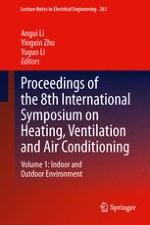Proceedings of the 8th International Symposium on Heating, Ventilation and Air Conditioning is based on the 8th International Symposium of the same name (ISHVAC2013), which took place in Xi’an on October 19-21, 2013. The conference series was initiated at Tsinghua University in 1991 and has since become the premier international HVAC conference initiated in China, playing a significant part in the development of HVAC and indoor environmental research and industry around the world. This international conference provided an exclusive opportunity for policy-makers, designers, researchers, engineers and managers to share their experience. Considering the recent attention on building energy consumption and indoor environments, ISHVAC2013 provided a global platform for discussing recent research on and developments in different aspects of HVAC systems and components, with a focus on building energy consumption, energy efficiency and indoor environments. These categories span a broad range of topics, and the proceedings provide readers with a good general overview of recent advances in different aspects of HVAC systems and related research. As such, they offer a unique resource for further research and a valuable source of information for those interested in the subject.
The proceedings are intended for researchers, engineers and graduate students in the fields of Heating, Ventilation and Air Conditioning (HVAC), indoor environments, energy systems, and building information and management.
Angui Li works at Xi’an University of Architecture and Technology, Yingxin Zhu works at Tsinghua University and Yuguo Li works at The University of Hong Kong.
